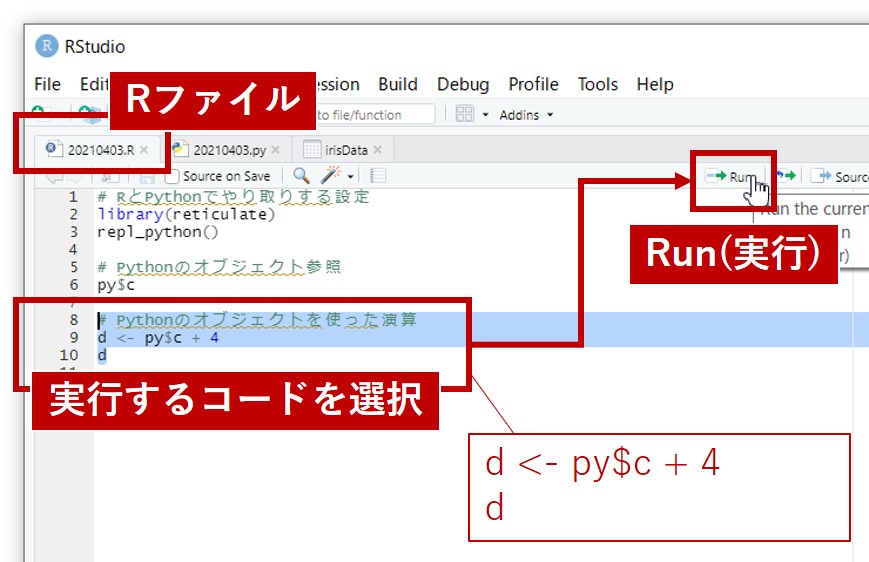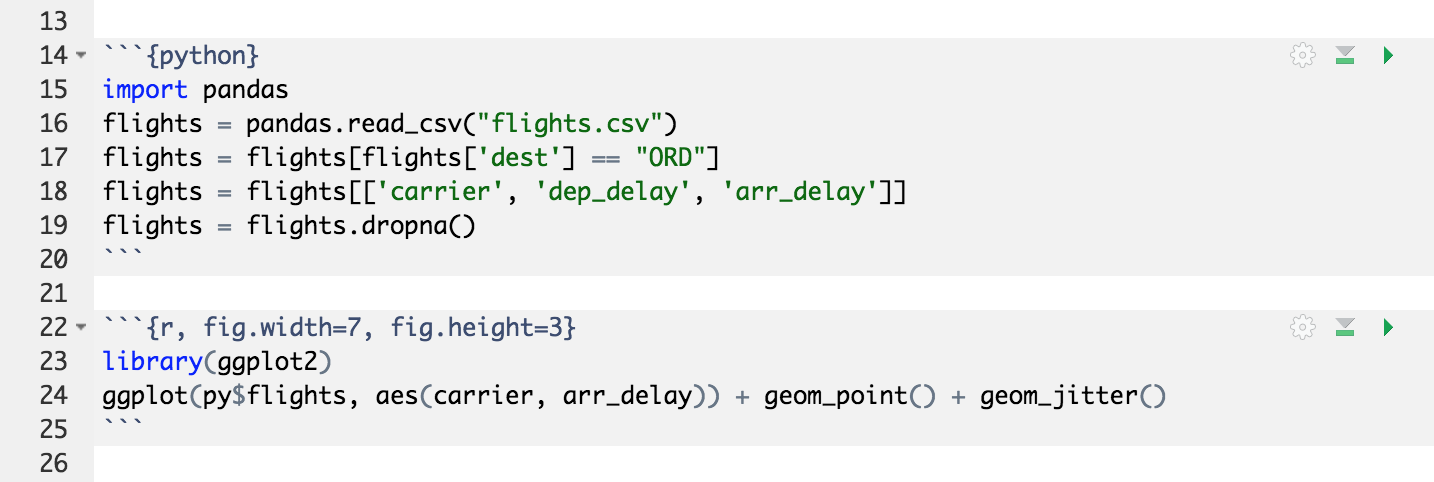

Then, Jupyter Notebooks are an open source web application for easily sharing documents that contain your live Python code, equations, visualizations and data science explanations. Its suite of specialized deep learning and machine learning libraries includes tools like scikit-learn, Keras and TensorFlow, which enable data scientists to develop sophisticated data models that plug directly into a production system. Plus, Python is particularly well suited for deploying machine learning at a large scale.


Pandas for data manipulation and analysis.Numpy for handling large dimensional arrays.Several Python libraries support data science tasks, including the following: In fact, Python is one of the most popular programming languages in the world, just behind Java and C. Released in 1989, Python is easy to learn and a favorite of programmers and developers.
R studio python code#
Python is a general-purpose, object-oriented programming language that emphasizes code readability through its generous use of white space.
R studio python how to#
Increasingly, the question isn’t which to choose, but how to make the best use of both programming languages for your specific use cases. The main difference is that Python is a general-purpose programming language, while R has its roots in statistical analysis.
R studio python download#
Free to download for everyone, both languages are well suited for data science tasks - from data manipulation and automation to business analysis and big data exploration. In many ways, the two open source languages are very similar. Although both languages are bringing the future to life - through artificial intelligence, machine learning and data-driven innovation - there are strengths and weaknesses that come into play. If you work in data science or analytics, you’re probably well aware of the Python vs. Python "wars" are crazy.) and we could focus more on solving problems and not on "which language is better" flame wars.Explore the basics of these two open-source programming languages, the key differences that set them apart and how to choose the right one for your situation. also Scala) it would be also great "positioning" for RStudio as the ultimate Data Science IDE & maybe it could even bring communities together (f.e. +Tip/Food for thought: IMHO with support for Python, Julia (or f.e. Jupyter/IPython as data science platform is great, but to have it all in one place and in advanced IDE like RStudio. would you consider also support for Julia in near future? (I mean. That is awesome! Thank you for that! So far for Python I use mostly Rodeo or P圜harm, but it will be great to have both in RStudio.ītw.

It’s never been our goal to make RStudio a fully multilingual IDE, but we’ve improved Python support in every release (check out the integration with the reticulate package if you haven’t already), and have plans for more Python support in 1.2. There’s not support for it specifically, but since we now have a terminal that you can send lines to, and you can run Python in that terminal, it’s surprisingly usable. In RStudio 1.1, you can use RStudio as a Python REPL.


 0 kommentar(er)
0 kommentar(er)
